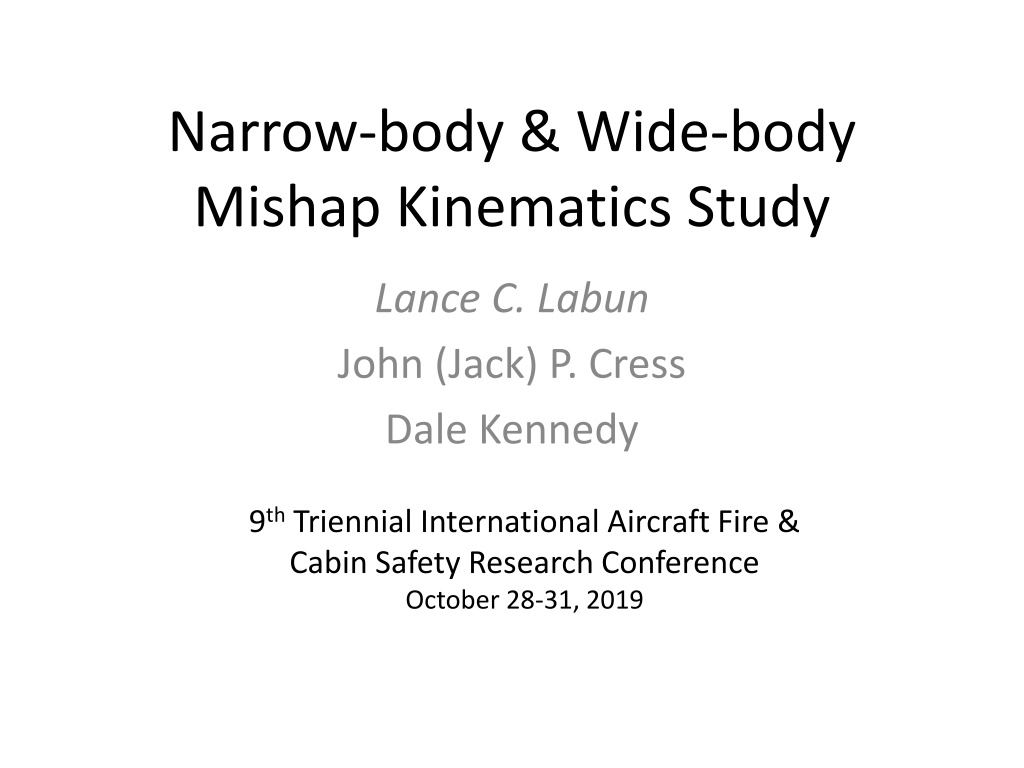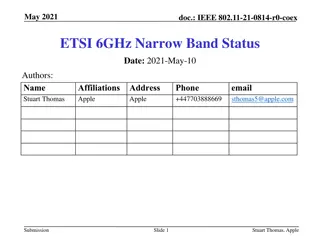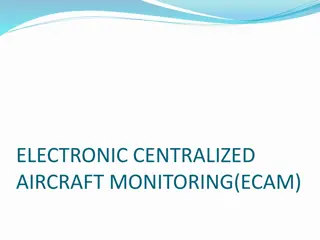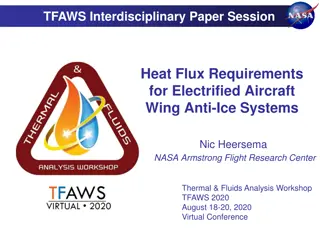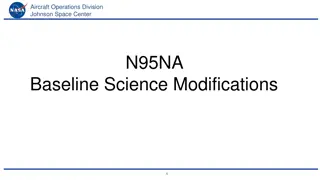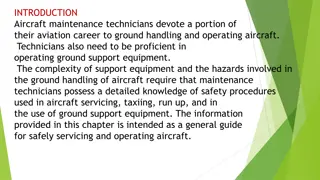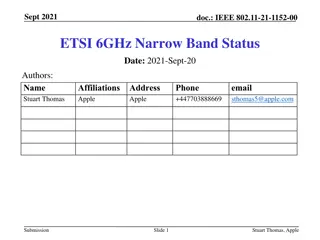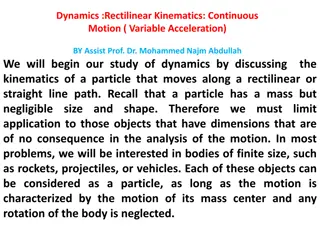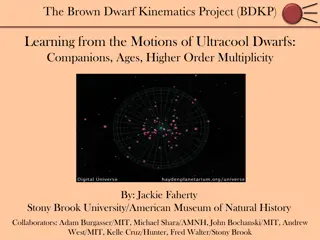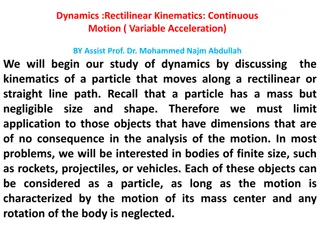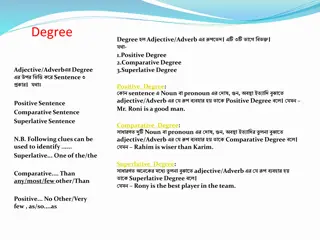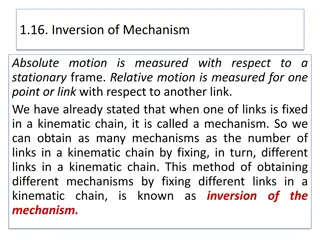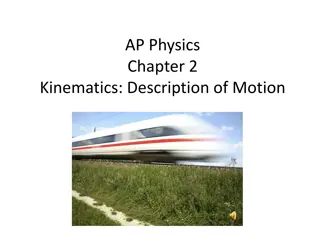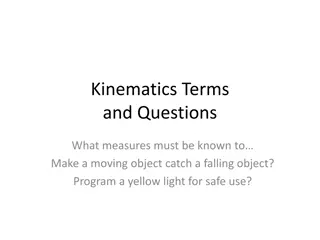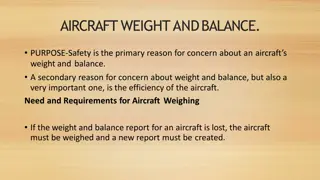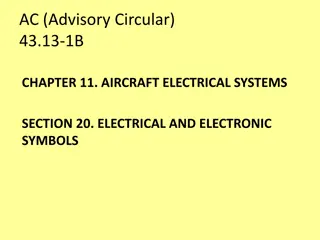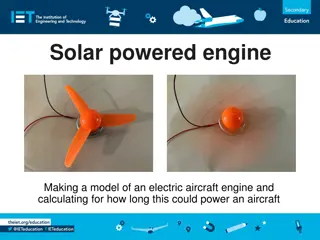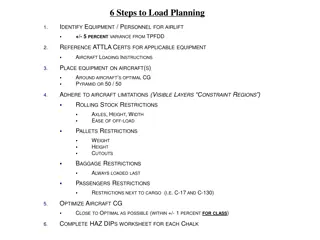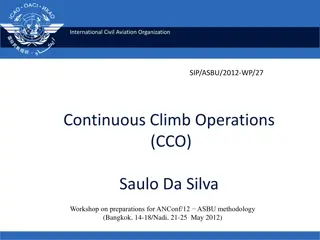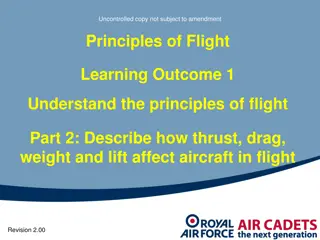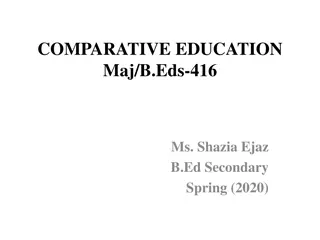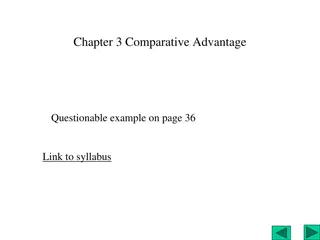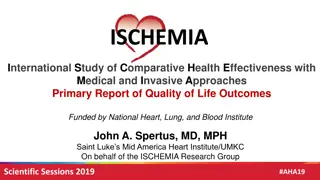Aircraft Mishap Kinematics Study: Narrow-body vs. Wide-body Comparative Analysis
Delve into a comprehensive study focusing on quantifying the kinematics, damage outcomes, and injury consequences of potentially survivable mishaps involving narrow-body and wide-body commercial aircraft. The study aims to correlate outcomes with kinematics, identify trends, and add to the existing knowledge in the field.
Download Presentation

Please find below an Image/Link to download the presentation.
The content on the website is provided AS IS for your information and personal use only. It may not be sold, licensed, or shared on other websites without obtaining consent from the author. Download presentation by click this link. If you encounter any issues during the download, it is possible that the publisher has removed the file from their server.
E N D
Presentation Transcript
Narrow-body & Wide-body Mishap Kinematics Study Lance C. Labun John (Jack) P. Cress Dale Kennedy 9th Triennial International Aircraft Fire & Cabin Safety Research Conference October 28-31, 2019
Study Objectives Quantify the kinematics of potentially survivable mishaps Quantify the damage outcomes of mishaps Quantify the injury outcomes of mishaps Correlate outcomes to kinematics Identify trends in outcomes Add to the knowledge developed in the ditching regional jet study
Mishap Selection Criteria Mishaps of single aisle and multiple aisle commercial transport aircraft Mishaps that were considered to be potentially survivable. Mishaps for which detailed investigations were conducted and the reports were readily obtainable. Result: All western built airframes 86 narrow-body & 29 wide-body mishaps N-B 1975-2014 W-B 1971-2014
Data Extracted Aircraft type, engine configuration, # of seats, # of occupants Kinematics: speeds, angles, accelerations Aircraft damage: skin, floor, seats, fuselage breaks, survivable volume, by segment Aircraft conditions: landing gear status, fire Occupants & seats: # & location by segment Injuries: minor/none, serious, fatal Evacuation: functionality & usability of portals
Mishap Scenarios Data for both aircraft types broken down into Mishap Scenarios for additional analysis Runway overruns Compromised landing, remained on or near runway (gear up, gear collapsed, tail strike) Terrain contact short of runway during landing (tracked with or without localized wind influence) Landing on runway with loss of control Loss of control on take-off or go around (tracked with or without localized wind influence)
Kinematics Kinematics of the mishap impact Airspeed, vertical velocity, flight path angle Attitude angles at impact: pitch, roll, & yaw Acceleration: longitudinal, vertical, lateral
Aircraft Damage by Occupied Segment Segments: Cockpit, forward cabin, overwing, aft cabin, tail (reflects break patterns) Breaks between segments recorded (Y/N) Underside skin damage (Widespread / Localized / None) Floor disruption (W / L / N) Seat failure (W / L / N) Loss of occupant volume (W / L / N) Combined to form a Damage Metric (0-112)
Occupant Injury Injury severity: None/minor, serious, fatal Occupants and their injuries were analyzed at the segment level Injury fractions, (# of injuries/# of occupants) were correlated with: aircraft design, mishap scenario, kinematics, damage metric, external obstacles, and fire. Binary logistical models were created to predict injury based on various parameters
Evacuation Fraction of mishaps with emergency evacuations Fraction of doors and exits functional and usable Also recorded the minimum number of portals usable
Scenarios Narrow-Body (percent of 86) Wide-Body (percent of 29) 24 Runway Overrun 30 Compromised Landing 13 24 Impacted Short 16 21 Impacted Short (Wind) 6 7 Hard Landing Lost Control 19 17 Lost Control TOGA 8 7 Lost Control TOGA (Wind) 8 0
Kinematics Mean for all mishaps excluding overruns Narrow-body (60 mishaps) 22.3 Wide-Body (22 mishaps) 22.2 Vertical Velocity (ft/s) Vertical Deceleration (G) 3.9 4.0 Airspeed (ft/s) 223 232 Long. Deceleration (G) -3.5 -2.8 Flight Path Angle (deg.) -7.0 -5.0 Pitch Angle (deg.) +4.3 +4.2
Damage Metric Whole Aircraft Narrow Body (damage metric) Wide Body (damage metric} Mishap Scenario Runway Overrun 22.0 13.9 Compromised Landing 2.5 4.0 Impacted Short 59.1 74.5 Impacted Short (wind) 24.8 61.5 Hard Land. Lost Ctrl. 10.1 36.4 Lost Ctrl. TOGA 72.6 75.5 Lost Ctrl. TOGA (wind) 55.1 -
Severity of Injuries Narrow Body (no. & %) Wide Body (no. & %) Fatal (all causes) 1,818 (17.6 %) 1,163 (16.9 %) Fatal (reported as thermal) Serious Injury 517 (5.0 %) 373 (5.4 %) 788 (7.6 %) 535 (7.8 %) Minor or Not Injured Total Occupants 7,704 (74.4%) 5,213 (75.5%) 10,310 6,877
Severe Injury Percent by Scenario Narrow Body (Severe Injury %) Wide Body (Severe Injury %) Runway Overrun 20 7 Compromised Land. 0 1 Impacted Short 52 63 Impacted Short (wind) 40 47 Hard Land. Lost Ctrl. 8 24 Lost Ctrl. TOGA 85 84 Lost Ctrl. TOGA (wind) 48 -
Injury Fraction by Segment Does not include Runway Overruns Cockpit Narrow Body (% severely injured) 40 Wide Body (% severely injured) 50 Forward Cabin 31 55 Overwing Cabin 28 47 Aft Cabin 23 36 Tail 36 6
Evacuation Results Overview Narrow-body (# / # mishaps, percent) Wide-body (# / # mishaps, [percent]) Emerg. Evacuation 57/86 [66] 20/29 [69] Post-crash fire 35/86 [41] 17/29 [59] Emerg. Evac. Fire a factor in Evac. 35/57 [61] 11/20 [55]
Escape Portals Narrow-Body (Avg. # Rptd Avg. # Usable) Wide-Body (Avg. # Rptd Avg. # Usable) Overrun 6.7 5.4 7.2 4.6 Compromised Ldg. 4.7 4.2 8.0 4.3 Land Short (All) 6.8 4.7 4.2 - 3.8 Hard Ldg. Loss of Ctrl 7.2 5.6 5.0 4.3 TOGA (All) 4.3 3.0 10.0 4.0
Acknowledgments Funded by Federal Aviation Administration Joseph Pellettierre & Alan Abramowitz Funded through: National Institute for Aviation Research, Wichita State University John Tomblin Report Status: Submitted to the FAA May 2018. Report Title: Study of Transport Aircraft Water Mishap Kinematics and Regional Jet Mishap Kinematic
